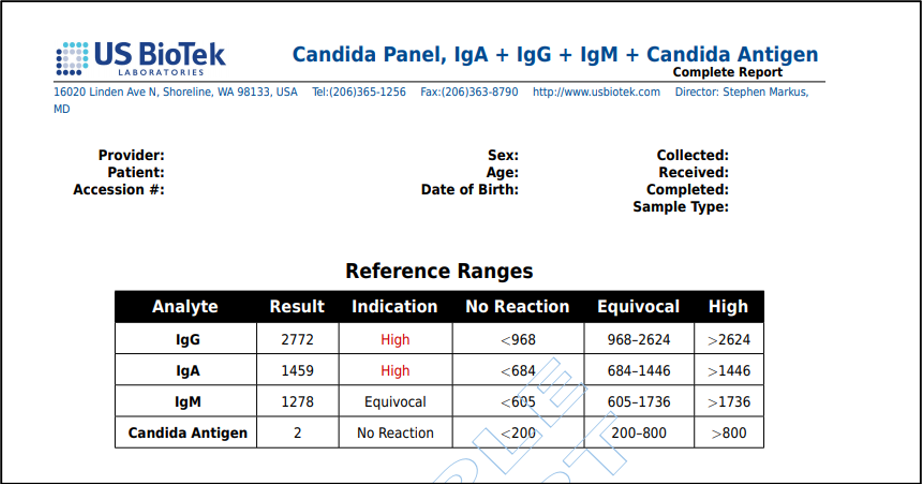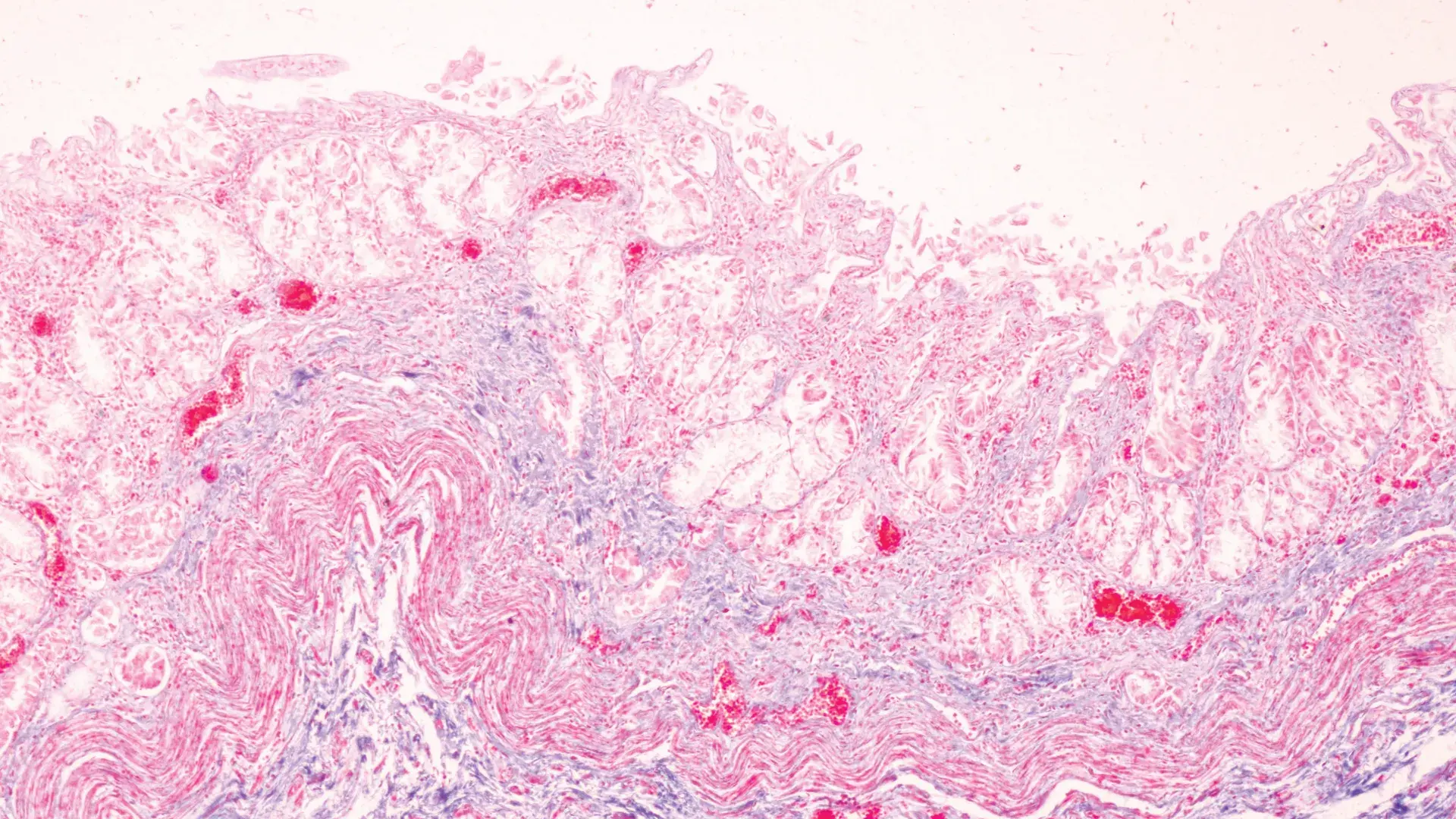4 Questions On NAD/NADH Testing Answered
Unlocking the Secrets of Cellular Energy
5 min read
![]() Dr. Andrea Gruszecki, ND
:
July 16, 2020 at 11:57 AM
Dr. Andrea Gruszecki, ND
:
July 16, 2020 at 11:57 AM

In September 2019 US Biotek Laboratories added an Ig Candida screen to all IgG, IgG4, and IgA food sensitivity testing. The Candida screen was added to provide additional clinical utility to our food sensitivity testing, because the presence of Candida antibodies may indicate another area of imbalance that requires attention and treatment.1 Here are four things we think clinicians should know about Candida immunoglobulin (Ig) screening based on our experience.
Candida albicans is one of several Candida species found in the gastrointestinal mycobiome.2 Approximately 50-60 different yeast species may colonize the gut microbiome and interact with the bacteria, viruses, and other yeast that inhabit the gastrointestinal tract. Individuals with gastrointestinal disorders (inflammatory bowel disease, ulcers, etc.) are often colonized by Candida.3 Candida species may also be found in skin, vaginal, and mouth microbiomes.
Candida and other yeast may act as opportunistic pathogens, either locally in the gut or systemically if they escape into the circulatory system. Candida may also overgrow in the mouth, vaginal, or skin microbiomes, and cause local or systemic symptoms including Candida hypersensitivity and allergic pulmonary disease.4Animal studies indicate that gastrointestinal Candida may promote increased sensitization against food antigens, which can worsen food allergy and sensitivity reactions.1
The US BioTek Candia Ig screen and the Candida panel provide information regarding the patient’s immunological response to Candida cell wall proteins (antigens). An elevation on the Candida marker may indicate a current Candida overgrowth, a leaky gut, or a transient Candida bloom within the last month or two.

Different clinicians may order different antibodies or combinations of antibodies when they test their patients. IgG, IgG4, and IgA antibodies all provide different information. US BioTek IgG testing evaluates Ig subclasses IgG1, IgG2, and IgG3; these are the three IgG classes that activate complement and promote delayed hypersensitivity reactions.5 IgG4 is generally considered a blocking antibody for IgE, and IgG4 helps protect against IgE-driven Type I anaphylactic hypersensitivity reactions. While serum IgA levels are often associated with gastrointestinal Candida, IgA may also indicate Candida present in other tissues. Serum Candida IgA has been associated with genitourinary infections and hypersensitivity reactions in human studies.6,7 Lower levels of serum IgA are considered protective, while higher levels may indicate binding to pathogens or immune complexes.8
Because IgG has a half-life in circulation of about 21 days, an elevated Candida screen does not always indicate a current Candida overgrowth.9 The IgA half-life is shorter, which makes the presence of Candida more likely; however, the serum IgG and IgA result may also indicate an increase in gut wall permeability (also known as “leaky gut”).
If there is a leaky gut, then Candida cell wall proteins may be escaping into circulation and raising an antibody response, while Candida levels in the gut are low or normal. For this reason, and to promote good anti-microbial stewardship, it is always recommended to confirm the presence of gastrointestinal Candida overgrowth prior to attempting treatment.10 Using stool testing to identify live Candia cultures and sensitivities provides the best guidance for treating any Candida overgrowth using effective anti-microbial therapies. Treating with the guidance of culture and sensitivities also prevents the development of anti-microbial resistance in Candida and other yeasts.
If more detailed information on the Candida exposure is desired, then the Candida Panel may be considered. The Candida Panel measures IgM, IgA, and IgG antibody responses as well as Candida antigen.

The half-life of the immunoglobulins must be considered when reading the Candida Panel:
IgM and IgA antibodies rise early in the infection process, and when elevated they provide a better sense that a real-time Candida exposure might be taking place. With their shorter half-lives, the levels for IgA and IgM might be expected to drop off as the IgG levels rise (about 3 weeks after exposure or infection).11
So, we might read the sample report above as indicating that there was a systemic Candida exposure, either through a transient loss of gut barrier function (which can happen with acute psychological or physical stressors), a resolving Candida overgrowth or infection, or a recent or transient Candida bloom in the gastrointestinal tract. Candida blooms may occur after antibiotic use or if the diet is high in simple sugars or carbohydrates.12,13
If a gastrointestinal Candida overgrowth is expected, there is little need for the patient to suffer while waiting for the results of the stool test and Candida culture. Immediate steps can be taken to make the gastrointestinal tract and gut microbiome less friendly towards Candida and other yeasts:
None of these steps run the risk of increasing anti-microbial resistance in Candida or other gut microbes, and they may provide some relief from Candida-caused symptoms while confirmatory testing is performed.
In conclusion, screening for the presence of Candida exposure increases the clinical utility of food sensitivity testing. A reactive Ig Candida screen is a call to action, and the correction of the underlying causes may improve patient health and outcomes.

Unlocking the Secrets of Cellular Energy

Short chain fatty acids (SCFAs) are organic acids produced by bacterial fermentation of dietary fibre and resistant starch. Enterocytes and...

Zonulin has emerged as a popular marker to assess the integrity of the intestinal mucosal barrier. Discovered by Dr Alessio Fasano, Zonulin...